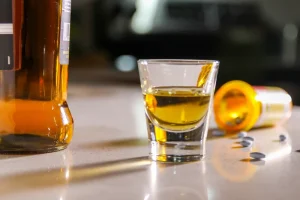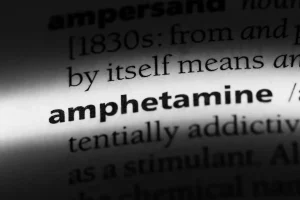
AUD is a condition where a person is addicted to alcohol or unable to control their alcohol use. Sign up to get tips for living a healthy lifestyle, with ways to fight inflammation and improve cognitive health, plus the latest advances in preventative medicine, diet and exercise, pain relief, blood pressure and cholesterol management, and more. Parents and teachers can play a meaningful role in shaping youth’s attitudes toward drinking. Parents, in particular, can have either a positive or negative influence. The percentage of pure alcohol, expressed here as alcohol by volume (alc/vol), varies within and across beverage types. Although the standard drink amounts are helpful for following health guidelines, they may not reflect customary serving sizes.
How much alcohol do teens use?
- NIAAA has information about alcohol use, alcohol use disorder, and treatment options.
- Keep an eye on things Ultimately, you are responsible for making sure the party is safe.
- While studies may try to statistically control for other drug use to parse the relative contribution of alcohol use on brain functioning, this method is imperfect given the high collinearity between alcohol and other drug use variables as well as potential interactive effects.
- The extent of alcohol-related activation was greatest for those with the highest levels of monthly alcohol intake (see Figure 1).
- Rodent studies have examined ways to reduce neuroinflammation caused from adolescent alcohol use.
Adolescents with histories of heavy drinking showed greatly enhanced neural activation while viewing the pictures of alcoholic beverages compared with pictures of nonalcoholic beverages. The extent of alcohol-related activation was greatest for those with the highest levels of monthly alcohol intake teenage alcoholism (see Figure 1). In contrast, youth with limited drinking histories showed similar levels of activation while viewing the two beverage picture types. These results demonstrated pronounced alcohol cue reactivity in heavy drinking teens, particularly in reaction to alcohol advertising materials.
Alcohol Abuse
The finding that older teens are more strongly influenced by their dating partners is consistent with Esser and colleagues (2017) findings. Early influence by a dating partner may set the stage for later high use patterns among dating individuals, with or without the same partner. Unlike adult drinkers, teenage drinkers have only recently begun drinking and are doing so illegally, which suggests they may be drinking for very different reasons as compared to adults. Generalizing research findings conducted among adult samples may be inappropriate for drawing conclusions regarding the behavior of adolescents. Repeated exposure to alcohol during adolescence also induces long-lasting neural and behavioural changes via the induction of neuroinflammation. Alcohol stimulates the release of innate pro-inflammatory cytokines that can disrupt synaptic plasticity and lead to neuropathology and cell death (136, 137).
Helping Someone with a Drinking Problem
If you need suicide- or mental health-related crisis support, or are worried about someone else, please call or text the 988 Suicide and Crisis Lifeline or chat with Lifeline to connect with a trained crisis counselor. Left untreated, alcohol overdose can lead to permanent brain damage or death. Alcohol overdose occurs when there is so much alcohol in the bloodstream that the areas of the brain controlling basic life-support systems—such as breathing, heart rate, and temperature control—begin to shut down. If you suspect someone is experiencing an alcohol overdose, get medical help immediately. Cold showers, hot coffee, food, or walking will NOT reverse the effects of alcohol overdose and could actually make things worse.

Some research suggests that through this process, distributed connectivity and circuitry between distant brain regions is increased relative to more local connectivity (21–23); however, this finding has been debated (24). Functional MRI studies further suggested that adolescents with histories of heavy drinking showed aberrant patterns of activation in response to cognitively challenging tasks,41,42 including tasks of working memory and inhibition. In adolescents with a history of 1 to 2 years of heavy drinking, the aberrant activation was not https://ecosoberhouse.com/ linked to detectable deficiencies in task performance. Some parents wonder whether allowing their children to drink in the home will help them develop an appropriate relationship with alcohol. Collectively, the literature suggests that permissive attitudes toward adolescent drinking, particularly when combined with poor communication and unhealthy modeling, can lead teens into unhealthy relationships with alcohol. Adolescence is a critical developmental phase involving significant physical, cognitive, emotional, social, and behavioral changes.
What Can Parents Do?

Preliminary evidence also suggests these dopamine system changes enhance later reactivity to the rewarding, but not harmful, effects of alcohol (123), although this requires further investigation in both animal and human studies. It is important to note that previous reviews illustrate that pre-morbid cognitive and neural vulnerabilities predispose some adolescents to initiate, and misuse, alcohol (4, 5). Presently, it is not clear whether neurobiological deficits are the direct results of adolescent alcohol use, irrespective of predispositions, or whether those youth exhibiting vulnerability markers prior to alcohol initiation then experience worse neurobiological outcomes following uptake. Larger prospective longitudinal studies that are currently underway will help disentangle these complex relationships (48, 78). Prevalence of current alcohol use and binge drinking in adolescents aged 15 to 19.


One suggestion is the suppression of neurotrophins, such as brain-derived neurotrophic factor (BDNF), which is a regulator of the survival and differentiation of newly generated neurons. Adolescent alcohol use appears to decrease BDNF expression in the hippocampus and interrupts neurogenesis (132–135). Further evidence of the role of BDNF in neurogenesis disruption comes from a study where a BDNF agonist was administered to male rodents previously exposed to alcohol (133). Administration resulted in neurogenesis, and reversed depression-like symptoms observed during alcohol withdrawal and abstinence following repeated alcohol use in adolescence. Rodent studies provide novel insight into areas which have not yet been studied in great detail in humans, such as effects of adolescent alcohol use on neurotransmitters, neurogenesis, and neuroinflammation. There are marked developments that occur in the dopamine neurotransmitter system during adolescence, important for reward-motivated behavior.
- Alcohol affects people differently at different stages of life—for children and adolescents, alcohol can interfere with normal brain development.
- If your teen is in an unconscious or semiconscious state, their breathing is very slow, their skin clammy, and there’s a powerful odor of alcohol, there’s a strong chance they may have alcohol poisoning.
- For instance, administration of a neuroimmune drug, ibudilast, reduced alcohol drinking in dependent male rodents by 50% (139), and administration of an anti-inflammatory drug, indomethacin, prevented cell death, and reduced cognitive and motor deficits that were evident after adolescent alcohol exposure (140).
Cross-sectional design studies have established a relationship between adolescent alcohol use, brain development, and cognitive function (4). Over the past decade, researchers have attempted to understand the direction of this relationship. Considering that it would be highly unethical to randomize youth to different alcohol-using groups, human research is limited to natural observational studies. This design allows for examination of normal developmental neural trajectories in youth who have never used alcohol or drugs during adolescence, and compares their brain maturation to youth who transition into substance use.

